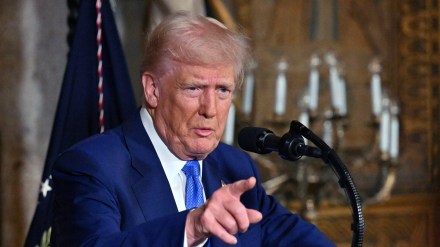US Secretary of State Marco Rubio on Monday announced that 83 percent of all USAID programmes will be shutdown after a six-week review. Rubio took to social media platform, X, and said the cut consists of 5,200 contracts, and the remaining, approximately 1,000 projects, are to be administered by the State Department directly.
He did not specify the nature of the projects that would be slashed.
After a 6 week review we are officially cancelling 83% of the programs at USAID.
— Marco Rubio (@marcorubio) March 10, 2025
The 5200 contracts that are now cancelled spent tens of billions of dollars in ways that did not serve, (and in some cases even harmed), the core national interests of the United States.
In…
According to 2025 Pew Research report, the government is projected spend about $58.4 billion on international assistance programs in the 2025 fiscal year, as per the January 2025 projections from the Congressional Budget Office.
USAID funds and India
Biden administration spent $39 billion on USAID in 2024 out of which $151 amount came to India. The top programmes funded by USAID in India in 2024 were in the health sector.
In 2024, $151 million was disbursed to India until December 19, when the site was last updated. $80 million of the $151 million disbursed to India went to the Health and Population category – with $42.99 million for basic health programs, including $16 million for Covid-19. The next highest allocation was to maternal and child health and family planning ($20.94 million), followed by environmental protection programs ($17.12 million).
In 2022, USAID was fourth among providers of Official Development Assistance to India with a contribution of $228 million after Japan ($2.97 billion), European Union institutions ($383.5 mn) and Germany ($235 mn), according to Organization for Economic Cooperation and Development (OECD) data.
USAID has disbursed a total $2.8 billion in Official Development Assistance to India since 2001, according to the data on foreignassistance.gov, a joint website of USAID and the US Department of State.
Which projects are under threat in India?
In 2001 and 2002, a major portion of the USAID funds went to Food Aid and Commodity Assistance. In the subsequent years, there was a shift in focus on the Health and Population category through allocations for polio eradication, maternal health, HIV/ AIDS and tuberculosis control programs – and Covid-19 in the 2022-2024 period.
HEALTH
Momentum 3B for Overcoming Entrenched Obstacles in Routine Immunization: With a substantial funding allocation of $20,596,671, this project is set to run until June 2026, playing a crucial role in bolstering public health efforts and preventing the spread of vaccine-preventable diseases.
Reaching Impact, Saturation, and Epidemic Control (RISE): With a funding allocation of $7,163,483, RISE is a crucial effort in the global fight against HIV, working towards epidemic control and improved health outcomes. The project is scheduled to continue its mission until December 2025.
Suwas-Support to Water and Sanitation in India: A funding of $4,050,001 has been allocated to Suwas and it plays critical role in ensuring clean water availability and better sanitation facilities for communities across India. This initiative is set to continue its impact until March 2026.
Strengthening Landscape Management and Conservation: A funding of $2,695,142 has been allocated for this programme long-term environmental sustainability. The programme is scheduled to conclude in April 2028.
Cleaner Air and Better Health: A funding of $1,500,000 is allocated to this programme to improve air quality and reduce air pollution exposure in selected Indian locations. The programme is scheduled to end in October 2026.
EDUCATION
Scaling up Early Learning: The programme has been allocated $2,115,879 to facilitate the creation of reading rooms to improve basic education. It is scheduled to end on September 2025.
Udyami-Building Resilience of Women Micro-entrepreneurs: The initiative is allocated $3,000,000 and it scheduled to end on November 2027.
ENERGY
South Asia Regional Energy Partnership (SAREP): The programme is allocated $5,196,278 to improve access to affordable, reliable, and sustainable electricity in South Asia and it is scheduled to end in September 2028.
BUSINESS
O-RAN Research Labs: The programme is allocated $3,300,000 to explore the creation of a tech platform for secure and trustworthy alternative 5G O-RAN, part of US efforts to facilitate a “free and open Indo-Pacific” and it is scheduled to end in September 2025.
GOVT & CIVIL SOCIETY
Central Tibetan Administration Capacity Building & Sustainability Initiative: The programme is allocated $2,898,081 to strengthen Central Tibetan Administration for delivering services to Tibetans and achieving community self-reliance and it is scheduled to end in August 2025.
OTHER SOCIAL STRUCTURE
Development Partnership Activity for Indo-Pacific Region: The programme is allocated $5,196,766 (2024), $962,488 (2023), $881,455 (2022) as USAID-Indian development engagement partnership to provide technical assistance to Indo-Pacific countries in energy, natural resource management, digital tech, connectivity, and international cooperation. It is scheduled to end in August 2025.
Experts maintain that the impact of USAID fund freeze will be significant in underdeveloped and developing countries in Asia and Africa, including India – especially in those health and social sector areas in which Indian government funding is limited, Indian Express reported. Programmes to combat tuberculosis and HIV/AIDS will be affected as USAID been the major contributors to the global fight against these critical diseases.
